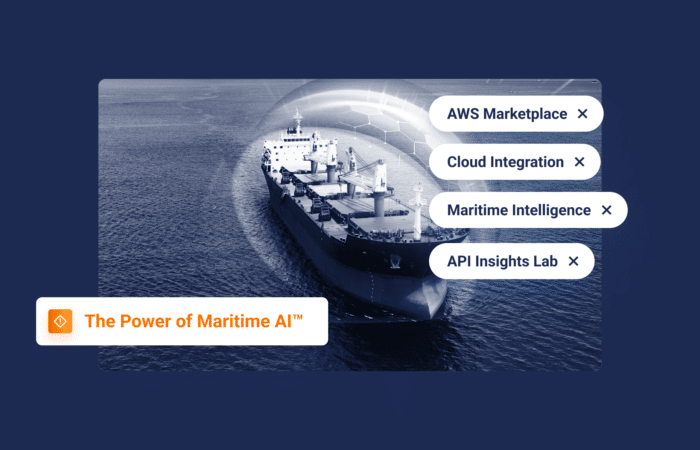What’s inside?
By Ido Sovran, Chief Data Scientist, Windward
Maritime personnel are welcoming AI solutions for a range of reasons, many related to cost savings, just like their counterparts in other sectors.
Speaking to CNBC, Steve Chase, consulting leader at KPMG U.S., said:
“Leaders are embracing AI to drive material efficiencies for their business and help workers do their jobs more effectively. Leveraging AI allows organizations to reconfigure roles in a way that minimizes time spent on repetitive tasks and maximizes strategic decision making.”
To do this successfully, businesses need to adapt, Chase says. This includes educating employees, helping them to upskill and reskill, and creating frameworks about using the AI technology in a responsible way.
Driving material efficiencies, minimizing time spent on repetitive tasks, and enhancing decision-making have all become critical goals across sectors, due to the looming global recession and dramatic global disruptions, such as the coronavirus pandemic and Russia’s invasion. Of course, the maritime industry and global supply chain are not exempt.
Currently, the most difficult, complex, time-consuming tasks within the maritime ecosystem require a wealth of human and financial resources – and oftentimes the result is still suboptimal! Companies harnessing Maritime AI™ will benefit from trend/pattern recognition, proactive identification of potential disturbances, and the immediate synthesis of hundreds of millions of data points.
Maritime decision-makers that can depend on AI will be more accurate, reliable, and agile – all decisive competitive advantages and cost-savers. Rather than replacing your job, AI’s insights will equip you to make faster and more accurate business decisions within the complex maritime ecosystem and maximize resource allocation, so you can fulfill your role more effectively.
Finding the Needle in the Haystack
There are so many objects in the sea and therefore there are so many data points, depending on an organizations’ main needs: a plethora of containers, fishing vessels, potential deceptive shipping practices (DSPs), ports and their accompanying congestion.
Overworked and busy maritime teams do not have the time, available staff members, or financial resources to analyze all potentialities. Fast screening and narrowing the potential aperture is the only way to keep costs down and maximize your team’s ability to concentrate on their core responsibilities.
Every organization’s risk appetite will be a little different, but Maritime AI™ enables global trade and business, by quickly clearing the overwhelming majority (over 90 percent) of vessels, removing the false negatives paralysis.
High Costs of DIY & Generic AI Solutions for Maritime
The dangers of rushing an AI system to market were demonstrated in February, when Google shares dropped $100 billion after its new AI chatbot made an obvious mistake during a demo. Bard, Google’s conversational bot, is perceived to have been quickly rolled out after Microsoft announced a new Bing and Edge browser powered by ChatGPT AI.
Building out an in-house AI system for maritime will quickly become time-consuming and pricey. For instance, let’s say you want to create an AI solution that can detect vessels engaged in illegal, unreported, and unregulated (IUU) fishing. You would need to:
- Obtain or purchase AIS data ($$$)
- Clean it
- Fuse it/create a fusion algorithm
- Determine if certain vessels are actually fishing vessels
- Create an algorithm for detecting fishing operations
- Know the indicators of IUU fishing and then, considering all of the above, create an AI model to track it
- Maintain the model, because IUU fishing patterns constantly change
This process will be lengthy and difficult, draining human and financial resources.
Generic (non-maritime) AI systems tend to be a jack of all trades, master of none. Vendors who wish to build something extremely accurate, must:
- Deeply understand the clients’ problems
- Define them well
- Test solutions with established, existing customers
- Continue to monitor the model to test its performance and accuracy in an evolving landscape
Lacking these safeguards, organizations will likely find themselves purchasing historical maritime data and spending money to plug the gaps caused by the lack of knowledge.
Finding a vertical AI provider is important. Windward’s maritime domain expertise, deep relationships with our clients and understanding of their challenges, and decade-worth of historical data, enable us to build and maintain AI solutions that are objectively better for maritime organizations than solutions offered by generic AI vendors.
Technology evaluators may be scared to purchase Maritime AI systems during an economic downturn, but the right system will offer a positive ROI by reducing costs and helping to facilitate business.




